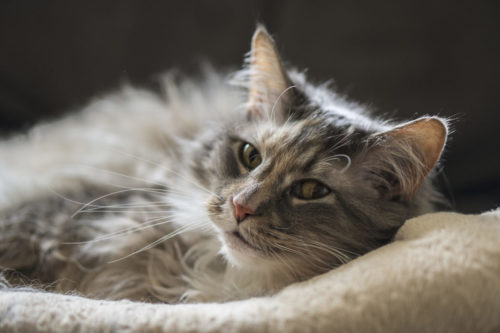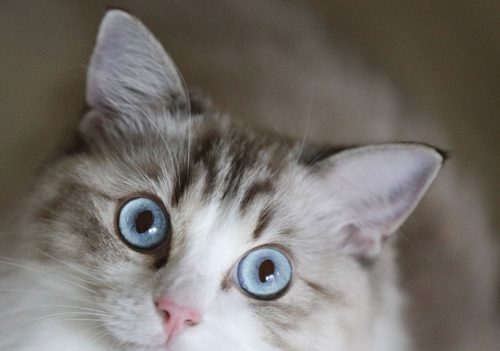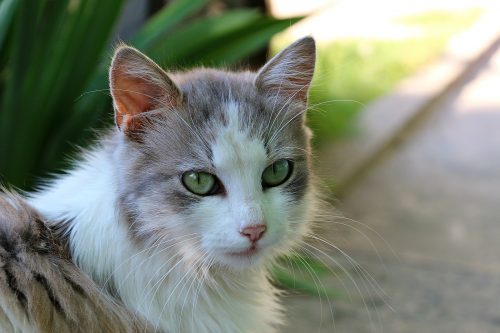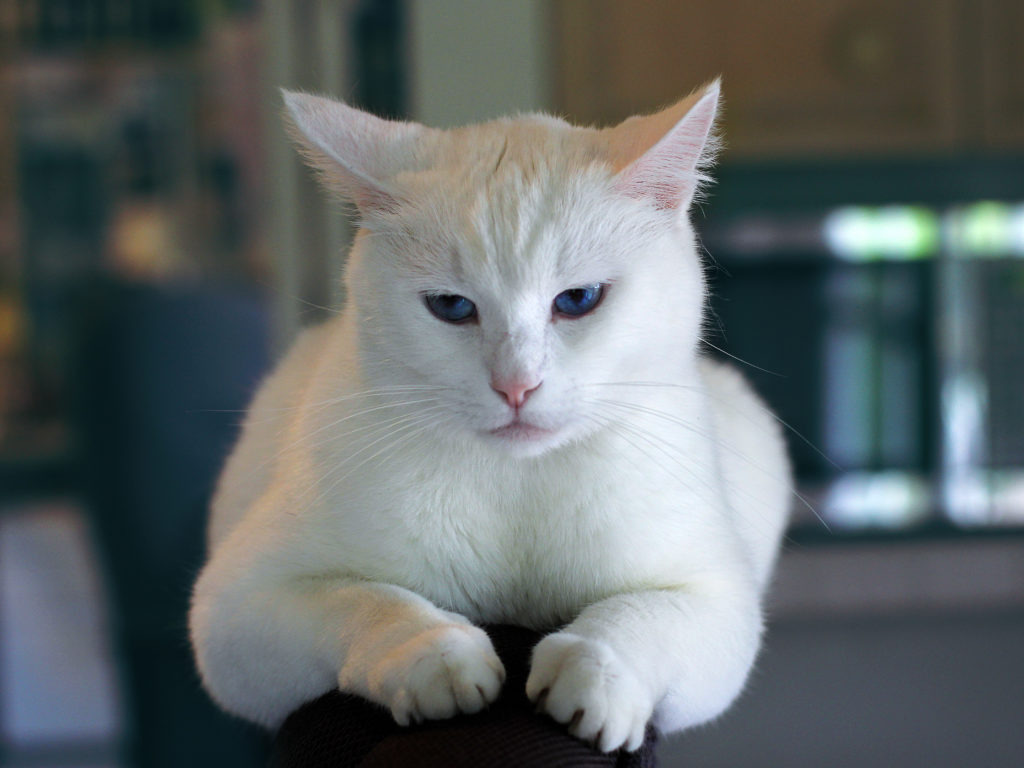While heart disease is most commonly associated with human beings, cats are able to suffer from heart disease as well. If you are a cat owner, it is important to be aware of the risk heart disease poses and how you can recognize if heart disease is developing. Heart disease in cats, which is also referred to as Hypertrophic Cardiomyopathy, develops when there is an abnormal function within the heart, causing a variety of different symptoms to arise. It can be disheartening and frightening to see your cat uncomfortable or in pain and not be able to talk to them to determine how you can help.
One of the best ways you can help your cat in the event he develops a condition, is to have a knowledge base of common conditions that it may be, as well as how best to respond for each distinct situation. To help you understand cat heart disease, here is an overview of Hypertrophic Cardiomyopathy, the most common causes of heart disease in cats, warning signs of heart disease, how Hypertrophic Cardiomyopathy is diagnosed, and potential treatment options that are available.
An Overview of Heart Disease in Cats
In order to understand how Hypertrophic Cardiomyopathy affects a cat’s heart, it is important to first know how the heart functions when it is healthy. The heart is comprised of four distinct chambers. The heart has two of these chambers at the top, they are called the left and right atria. The other two chambers of the heart are on the bottom and are called the left and right ventricles. Understanding Hypertrophic Cardiomyopathy is reliant on knowing how the left ventricle functions normally. The left ventricle receives oxygenated blood from the lungs. Once the left ventricle receives the oxygenated blood, it pumps this blood out where it goes into the aortic valve.
The aortic valve is the main artery in the body, which means that it is responsible for pumping the oxygenated blood it receives out to all other parts of the body. This is an extremely important function that affects a number of different processes within the body. When a cat is suffering from Hypertrophic Cardiomyopathy, the left ventricle and its ability to pump oxygenated blood to the aortic valve is compromised. In a healthy heart, the wall of the left ventricle of the heart is already thicker than that of the right ventricle. This increased thickness in the wall of the left ventricle is due to its function. The left ventricle has a much greater workload than the right ventricle because it is responsible for pumping blood out into the body. In cats with Hypertrophic Cardiomyopathy, the muscle of the left ventricle is enlarged or thickened much more than is normal. With this understanding in mind, it is now important to examine the most common causes of heart disease in cats.
Causes of Heart Disease in Cats
While the cause of Hypertrophic Cardiomyopathy in cats can be identified in some cases, in many causes the cause of Hypertrophic Cardiomyopathy remains unknown. It is believed that genetics play a role in the development of Hypertrophic Cardiomyopathy in cats. The most commonly attributed cause to the development of Hypertrophic Cardiomyopathy in cats is genetic mutations. Some cats are believed to be genetically predisposed to develop Hypertrophic Cardiomyopathy. In addition, Hypertrophic Cardiomyopathy is thought to be further complicated by the presence of Hypothyroidism or Hyperthyroidism in cats.
Hyperthyroidism occurs when the thyroid gland overproduces levothyroxine, a thyroid hormone, causing the metabolism and a number of other bodily processes to shift into overdrive. When a cat is suffering from Hypothyroidism, their thyroid gland is underproducing liothyronine and levothyroxine, two of the main thyroid hormones, causing the metabolism to slow down as a result. While neither Hypothyroidism or Hyperthyroidism has been identified as a direct cause of Hypertrophic Cardiomyopathy, they have been linked in a number of causes.
In addition to these causes, it is thought that some breeds of cats have a higher probability of developing Hypertrophic Cardiomyopathy. Some families or cat breeds appear to be genetically predisposed and have had a high number of cases of Hypertrophic Cardiomyopathy occur within their lineage. Maine coon cats are the breed most commonly associated with Hypertrophic Cardiomyopathy due to one large family being identified with the disease. Genetic predisposition to develop Hypertrophic Cardiomyopathy has not been identified in other breeds or families of cats, but some cases of an association have been recorded between Persian cats and American Shorthair cats. Correlations to the age of the cat diagnosed with Hypertrophic Cardiomyopathy also exist. Hypertrophic Cardiomyopathy occurs much more frequently in cats between the ages of five to seven years old. However, the age range of cases reports spans anywhere from three-month-old kittens to cats that are seventeen years old. Hypertrophic Cardiomyopathy also appears to affect males in higher numbers than females.
Warning Signs of Heart Disease in Cats

The most important knowledge you can have about Hypertrophic Cardiomyopathy in cats is the symptoms to recognize. By noticing warning signs early, you will be able to seek the help of a licensed veterinarian to get a diagnosis and treatment faster. This can prevent the heart from continuing to become damaged by working to compensate for the thickened left ventricle muscle, potentially lengthening your cat’s life and sparing them from unnecessary discomfort.
One of the most common warning signs of Hypertrophic Cardiomyopathy is difficulty breathing. Because the heart is not functioning correctly, it is having to work harder to maintain normal processes, which can result in labored breathing. In addition to difficulty breathing, cats frequently exhibit abnormal heart sounds when suffering from Hypertrophic Cardiomyopathy. Abnormal heart sounds can mean a variety of different abnormalities, such as a heart murmur, a galloping rhythm, or muffled heart sounds. Cats may also display abnormal breath sounds, such as short, rough breaths. In some instances, their breathing may develop a snapping noise. Because of the additional strain put on the heart because of the abnormal left ventricle, cats will often display an inability to exercise or exert themselves when suffering from Hypertrophic Cardiomyopathy. Cats may also exhibit a loss of appetite or lethargy in reaction to having Hypertrophic Cardiomyopathy.
Other warning signs of Hypertrophic Cardiomyopathy in cats are related to circulatory issues. Because the left ventricle is integral to pumping out oxygenated blood to the aortic valve, its malfunction can affect circulatory function and oxygenation levels in the blood. In some cats, they may begin to have a bluish discoloration on the nail beds or foot pads. This bluish discoloration is an indication that there is a lack of oxygen flow to the legs. This can be extremely dangerous and needs to be addressed by a licensed veterinarian immediately. In severe cases, cats may experience sudden paralysis of their hind legs. In these cases, their paralyzed limbs will often feel cold to the touch. This occurs due to a blood clot in the terminal aorta and is extremely dangerous. Some cats may also have a weakened pulse due to Hypertrophic Cardiomyopathy. Other symptoms of Hypertrophic Cardiomyopathy in cats include collapsing or sudden heart failure. If your cat begins to experience any of the above symptoms, it is vital that you seek medical care from a licensed veterinarian to make sure that your cat receives the care he needs.
Diagnosing Heart Disease in Cats
Diagnosing heart disease in cats can be a process that is challenging and scary. Watching your cat experience a heart issue can make you feel helpless and scared, but getting them the help they need to live a happy, comfortable life is of extreme importance. If you believe your cat may be suffering from Hypertrophic Cardiomyopathy, it is vital that you make an appointment with a licensed veterinarian. When you arrive at your appointment, the first thing you will do is provide a thorough history of your cat’s health, including any medications they are on, preexisting conditions, prior surgeries, overall health, genetic history, eating and behavioral habits, as well as the duration and severity of their symptoms.
At this time, your veterinarian will likely take your cat’s weight. After they have collected a complete history, they will do an initial physical examination. Part of this examination will be to listen to your cat’s heart rhythm. An abnormal heart rhythm is usually the first sign that indicates a cat may be suffering from Hypertrophic Cardiomyopathy, and your veterinarian may order other tests to confirm their diagnosis.
Many veterinarians will request an electrocardiogram (EKG) to analyze the electrical currents moving in the heart muscles. An electrocardiogram allows the veterinarian to detect abnormalities in how the heart is able to beat and contract, as well as cardiac electrical conduction. By conducting this test, your veterinarian may be able to pinpoint where the abnormal heart rhythms are originating from. Unfortunately, this is often only one test of several that is needed to provide a definitive diagnosis. There are several other conditions that can mimic the symptoms of Hypertrophic Cardiomyopathy, two of which are hypertension and hyperthyroidism.
Additional tests are often requested to rule out other possible culprits as much as they are to confirm a suspected diagnosis. Your veterinarian may request a radiograph and echocardiograph (ultrasound) imaging to see visually if there are enlargements or abnormally thick walls within the heart. In particular, they will often look for thickening of the mitral valve if they suspect heart disease. The mitral valve controls how quickly blood travels between the left ventricle and the left atrium. To rule out hypertension, your veterinarian will check blood pressure. To rule out hyperthyroidism, they will do a blood test that checks for levels of thyroid hormones in the blood. If your veterinarian determines that your cat is suffering from Hypertrophic Cardiomyopathy, the next step is to discuss possible treatment options with them.
Treating Heart Disease in Cats
There are a variety of different treatment options available to cats that are diagnosed with heart disease. The first step is often to hospitalize the cat until they are stabilized, depending on the severity of their symptoms when they are brought in for their appointment. Unfortunately, Congestive Heart Failure is a common outcome of Hypertrophic Cardiomyopathy, which will require more care to keep your cat comfortable. To minimize your cat’s stress, he will be placed in an environment that is quiet and calm.
If he is experiencing difficulty breathing, your veterinarian may recommend oxygen therapy until his breath sounds have regulated. If his body temperature has dipped due to the Hypertrophic Cardiomyopathy, the veterinarian may recommend surrounding the cat in blankets to slowly raise his body temperature back within normal range. In addition to these measures, there are a number of different prescription medications that can be utilized to treat and control Hypertrophic Cardiomyopathy. Below are the most common treatment options available, as well as how they work.
- Beta Blockers: Beta Blockers works by correcting irregular heart rhythms, slowing down the heart rate, and controlling any blockages in the blood flow. It is important to note that Beta Blockers are not an available treatment option if the cat has developed Congestive Heart Failure.
- Diltiazem: Diltiazem slows down the heart rate, regulates irregular heart rates, and in some cases, can reduce the enlargement of the left ventricle.
- Warfarin: Warfarin is usually used in conjunction with another treatment option. Warfarin is a type of blood thinner that will prevent blood clotting.
- Aspirin: Aspirin is often used concurrently with other medications as a measure to decrease the risk of blood clots.
- Ace Inhibitors: While Beta Blockers cannot be used to treat cats with Congestive Heart Failure, Ace Inhibitors are designed specifically to improve blood flow through the ventricle in cats with Congestive Heart Failure.
- Furosemide: Furosemide is often used in addition to other treatment options. Furosemide is a diuretic, meaning that it removes excess fluid from the body. If the heart is not functioning properly, sometimes excess fluid can build up in the lungs or around the heart, making it difficult to breathe.
- Spironolactone: Spironolactone is a diuretic for cats with Congestive Heart Failure.
- Nitroglycerin Ointment: This ointment is sometimes prescribed to open the ventricle and arteries and improve flow by dilating them.




